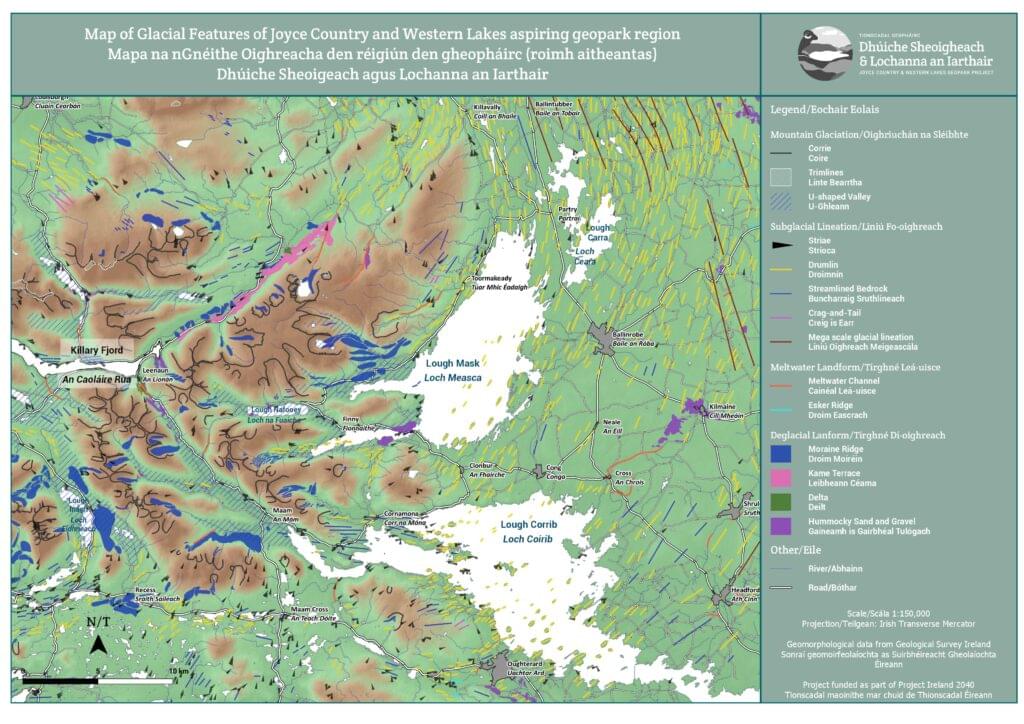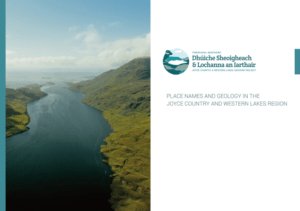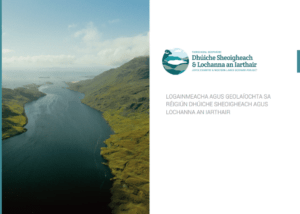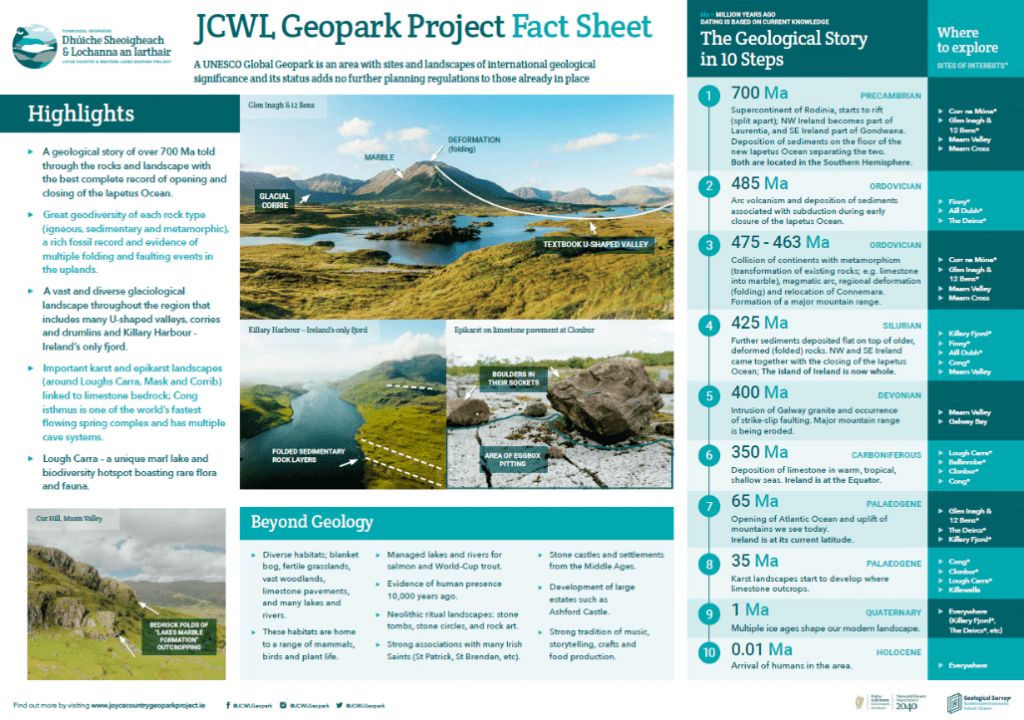Place Name and Geology booklet
This booklet was developed by JCWL GeoEnterprise and funded by Geological Survey Ireland. This bilingual English/Irish booklet follows and adds to the expert works of the late Fiachra McGowan and the late Tim Robinson by focussing on the geological and geomorphological features recorded in place names in Ireland with more specific examples from the region.
Our region has fascinating examples of such links like in Cloghbrack (an Chloch Bhreac – the speckled rock) or Aill Dubh (Black Cliff) which directly link with the colour of their local bedrock. Places like Ballintubber (Baile an Tobar – the townland of the well) tell us about our karst landscape in limestone and others like Clogher (an Clochar – the rocky place) remind us of the ice-sheets that left stones in our soil. The booklet also provides tools to research your local geology all over Ireland with a glossary of frequent terms used.
You can download the pdf of the booklet in either the Irish or English version. Some printed copies are available on request. Click on the image to open up the pdf.




